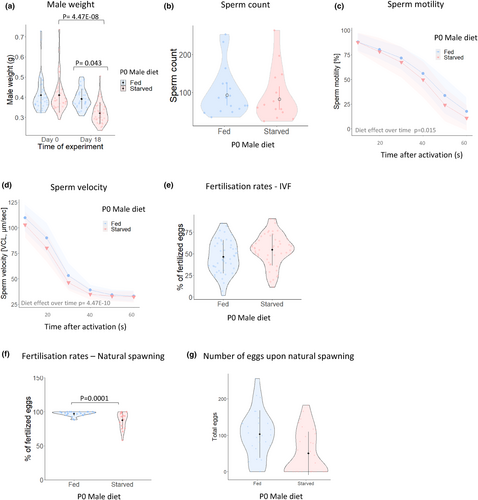Fig. 2 Starvation leads to altered male fertility traits. (a) Weight of fed and starved males on days 0 and 18 of the experiment. On day 18, the weight of starved males was significantly reduced by 21.83% in 3 independent experiments (starved group Day 0: 0.41 ± 0.08, Day 18: 0.321 ± 0.05, mean ± SD). Individual data points are represented as dots within the violin plots. N = 37. (b) Sperm count in fed and starved males. Bars represent the mean and 95% confidence intervals. (c) Percentage of sperm motility in fed and starved males across 6 time points after sperm activation. (d) Sperm velocity in fed and starved males at 6 time points after sperm activation. (e) Percentage of fertilised eggs at 64-cell stage (2 hpf) and produced by IVF. Individual data points within the violin plot represent the average egg survival rate per male and across 7 independent tanks. N = 49. (f) Percentage of fertilised eggs at 64-cell stage (2 hpf) and produced by natural spawning, Fed males N = 27, Starved males N = 32. Individual data points within the violin plots represent the average egg survival rate per male and across 3 independent rounds of breeding (g). Number of eggs produced per non-experimental females during natural spawning with fed or starved males. Black bars represent the mean ± SD. Shadowing in panels c and d represents 95% confidence intervals.
Image
Figure Caption
Acknowledgments
This image is the copyrighted work of the attributed author or publisher, and
ZFIN has permission only to display this image to its users.
Additional permissions should be obtained from the applicable author or publisher of the image.
Full text @ Mol. Ecol.

